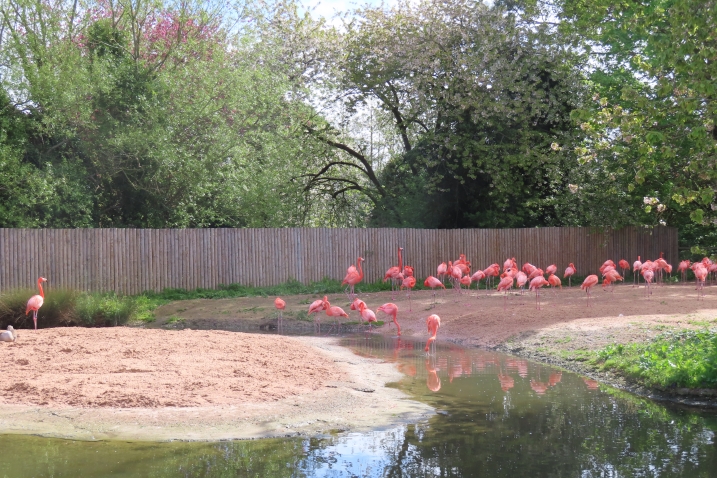Christmas flamingos and what happens in winter?
Winter can be a harder time for Phil, Sparky and co as they look after the flamingos in weather that’s not always helpful to complete flamingo happiness. Birds may be indoors and pools iced over, meaning flamingos might be spending less time outside. To keep the flamingos as comfortable as possible, there’s been some changes made to the Caribbean flamingo house. New flooring, a re-designed indoor pool, and new feeders to allow as many birds to feed together as possible were installed in the autumn.
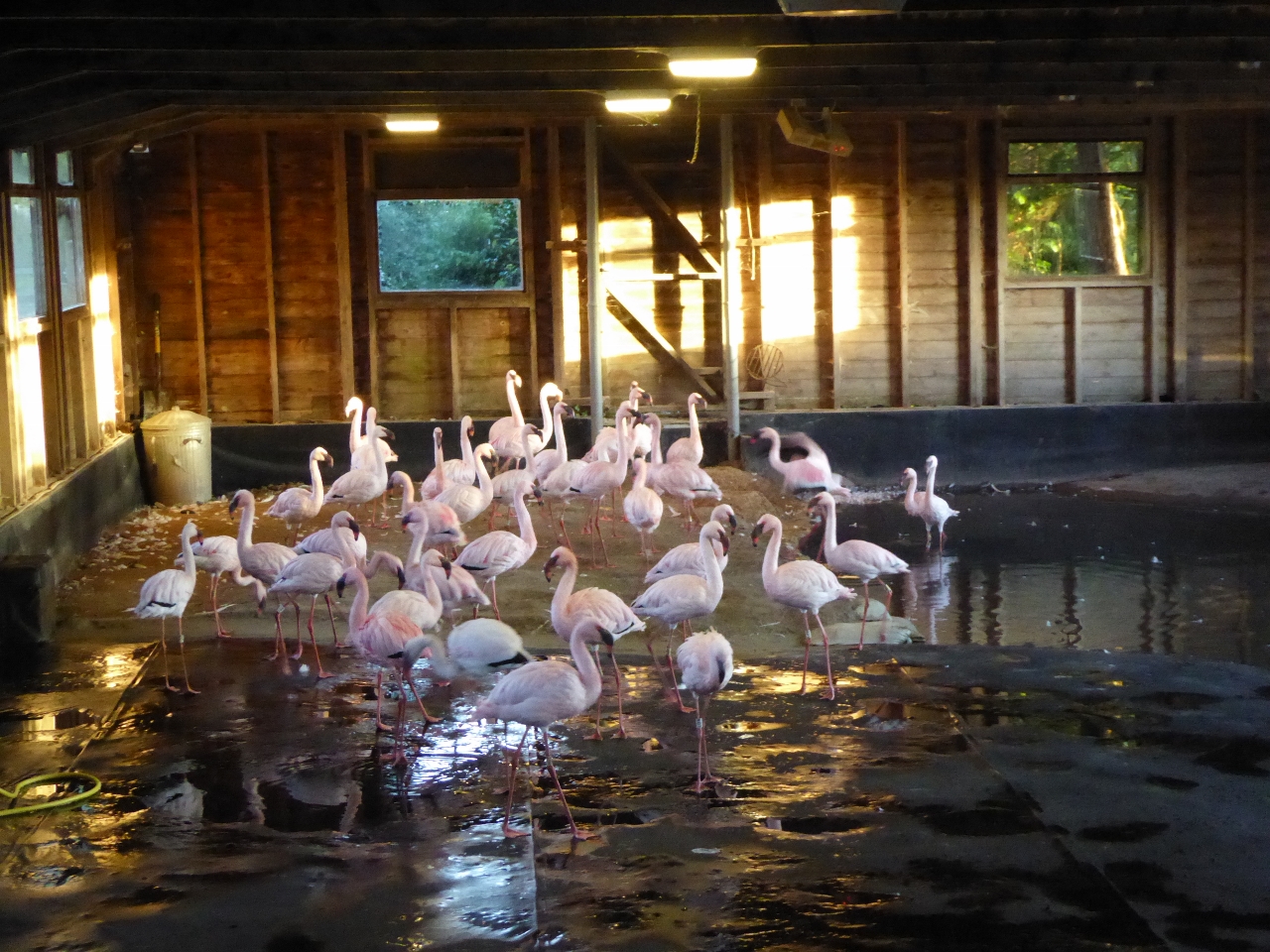 Let's go "behind the scenes" with the lesser flamingos. This smallest species is especially vulnerable to poor weather conditions. The size of the WWT Slimbridge house gives the birds plenty of opportunity to behave normally during winter.
Let's go "behind the scenes" with the lesser flamingos. This smallest species is especially vulnerable to poor weather conditions. The size of the WWT Slimbridge house gives the birds plenty of opportunity to behave normally during winter.
In spite of their image as tropical, exotic birds, not all species come from hot climates. Whilst lesser and Caribbean flamingos might need some extra TLC in winter snow flurries, the South American species are perfectly happy in much colder weather, as they have evolved to live high up in the frozen peaks of the Andes Mountains. However, all flamingos will come inside if the conditions get really bad and if there are strong winds, or heavy snow, or the threat of ice.
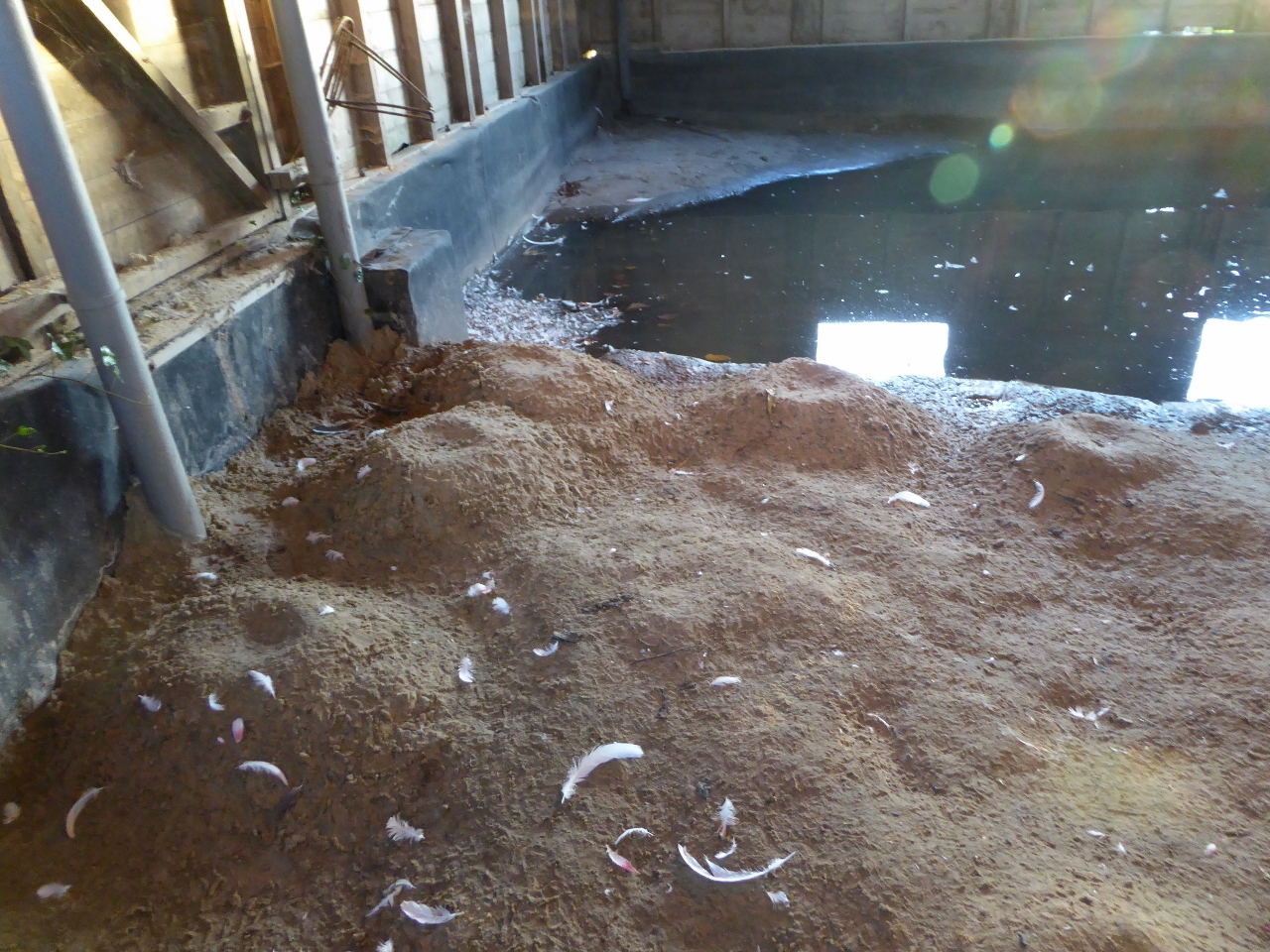 And how do we know that our flamingos don't mind being inside? Well, they will start building nests. The marks around the sand here show that these are new creations by the lesser flamingos. Indoors can sometimes be just fine![/caption]
And how do we know that our flamingos don't mind being inside? Well, they will start building nests. The marks around the sand here show that these are new creations by the lesser flamingos. Indoors can sometimes be just fine![/caption]
Flamingos like to be able to get out of the water to rest, preen and roost. We know from information on wild birds that they generally have two forms of “activity” and therefore two types of “habitat” that they use. A flamingo’s day is generally spent roosting, preening and just hanging about (often on land) and bathing, foraging and feeding (in water). We can make sure that the WWT flamingos have the same daily pattern to their behaviour, whether inside or outside, by making their enclosures have areas in them that copy the same environments that they would use out in the wild.
[caption id="attachment_74409" align="alignnone" width="600"]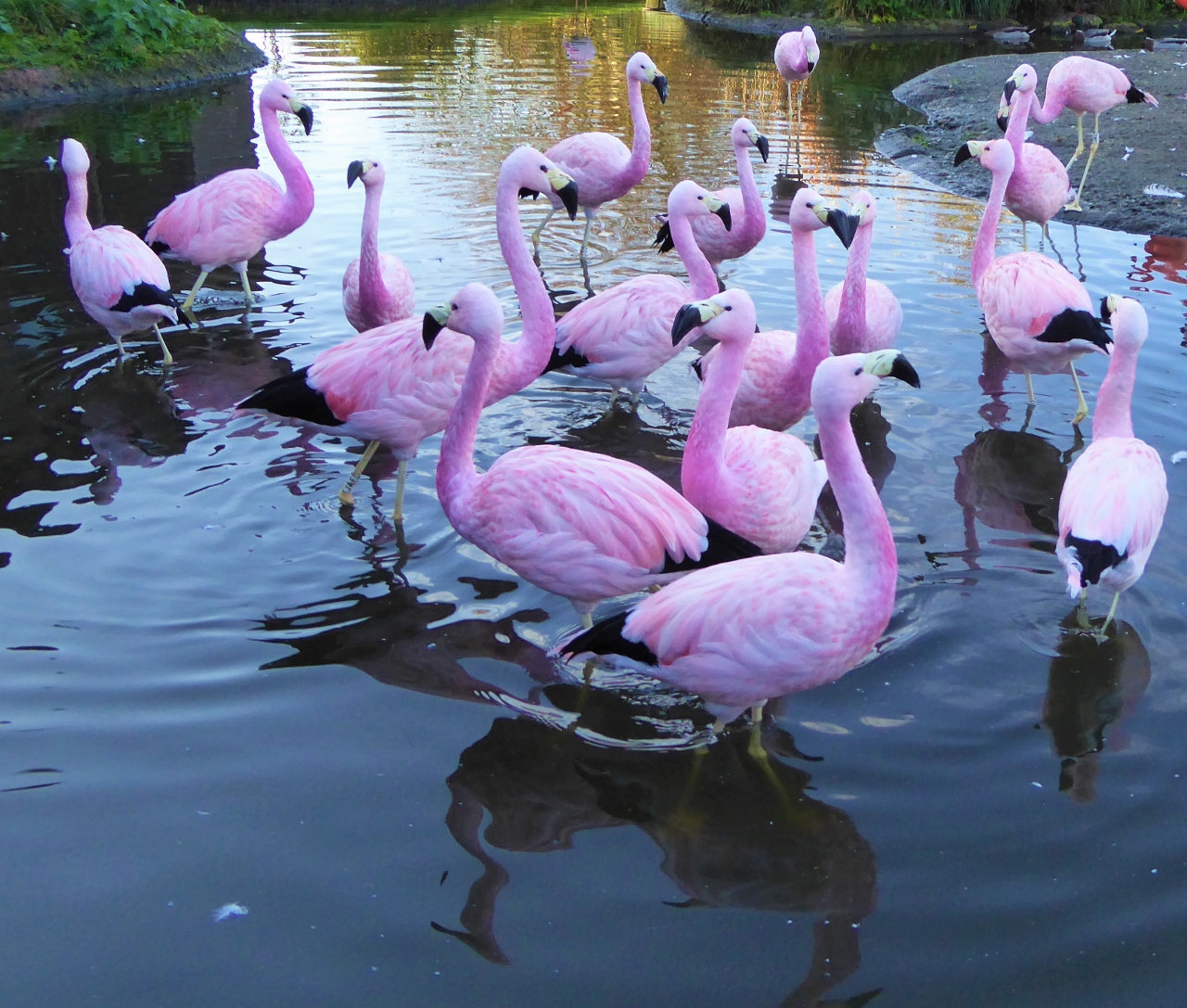 It's never too cold for us! Well that's not strictly true... nobody wants to be out in the ice, but Andeans and Chileans, and Mr James have all evolved to be cold hardy and can cope with harsher weather.
It's never too cold for us! Well that's not strictly true... nobody wants to be out in the ice, but Andeans and Chileans, and Mr James have all evolved to be cold hardy and can cope with harsher weather.
By putting in these changes to their housing, we keep the birds happy when they are inside and they can keep themselves clean, warm and dry easier. Flamingos spend a long-time preening. It’s good for them to come out of the water and on to land to oil and zip together their feathers if they have been outside in cold, windy, unpleasant weather.
 Building work inside the Caribbean flamingo house in the autumn has now finished, and birds can be snug and dry if there is bad winter weather on the way.
Building work inside the Caribbean flamingo house in the autumn has now finished, and birds can be snug and dry if there is bad winter weather on the way.
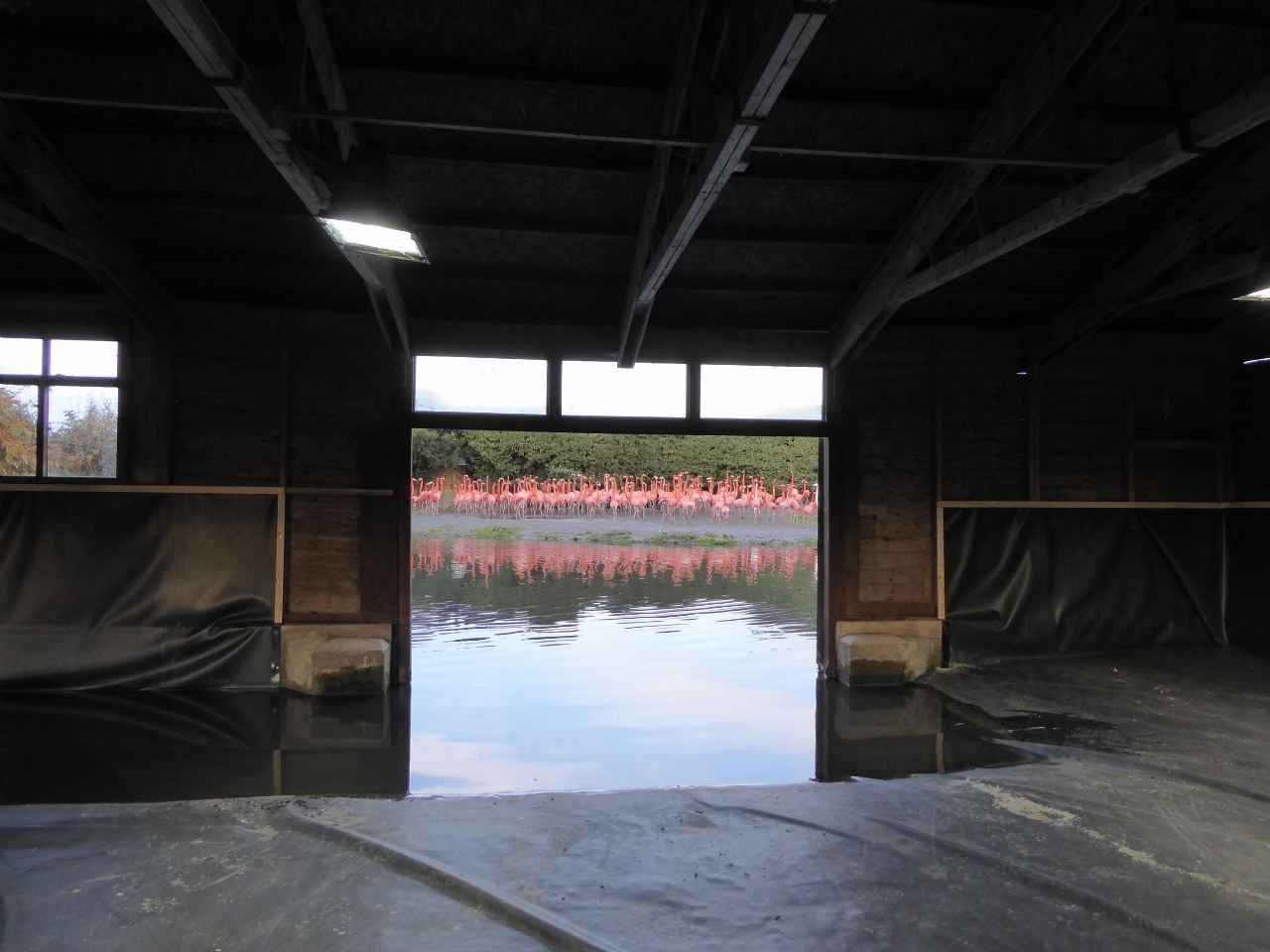 Another "behind the scenes" view for you. It's not often you get to see the Caribbean flock from inside their house. Changes to their indoor pool and standing areas will increase flamingo comfort.
Another "behind the scenes" view for you. It's not often you get to see the Caribbean flock from inside their house. Changes to their indoor pool and standing areas will increase flamingo comfort.
It’s also good for the birds to have more room to feed when they are inside. Flamingos do not always have the best table manners and arguments are common at dinner time. We’ve already made some changes to how the lesser flamingos are fed, in their wide, shallow indoor pool, and the greater flamingos get to gobble up their pellet spread out in the pool of their house too. These new feeding troughs will allow more flamingos the chance to eat their fill without being shoved around by their neighbours.
 New troughs for feeding the birds inside. More room to spread out, and more pellet can be provided at any one time. Nobody needs a hungry flamingo...[/caption]
New troughs for feeding the birds inside. More room to spread out, and more pellet can be provided at any one time. Nobody needs a hungry flamingo...[/caption]
After breeding for the first time in a couple of years, the Chilean flamingo flock went into a heavy moult. To allow them a chance to get back into tip-top condition quickly and comfortably, the flock was kept inside its house and out of the worst of the autumn wind and rain. Phil ran clean tap water into their pool to encourage bathing and the preening of new feathers. The birds have now moulted through and they have returned to their outside enclosure. New chicks are growing fast and can be seen as much larger grey-brown juveniles milling around with the adults. Let’s hope that the 2017 breeding excitement encourages eggs and chicks in the following years too.
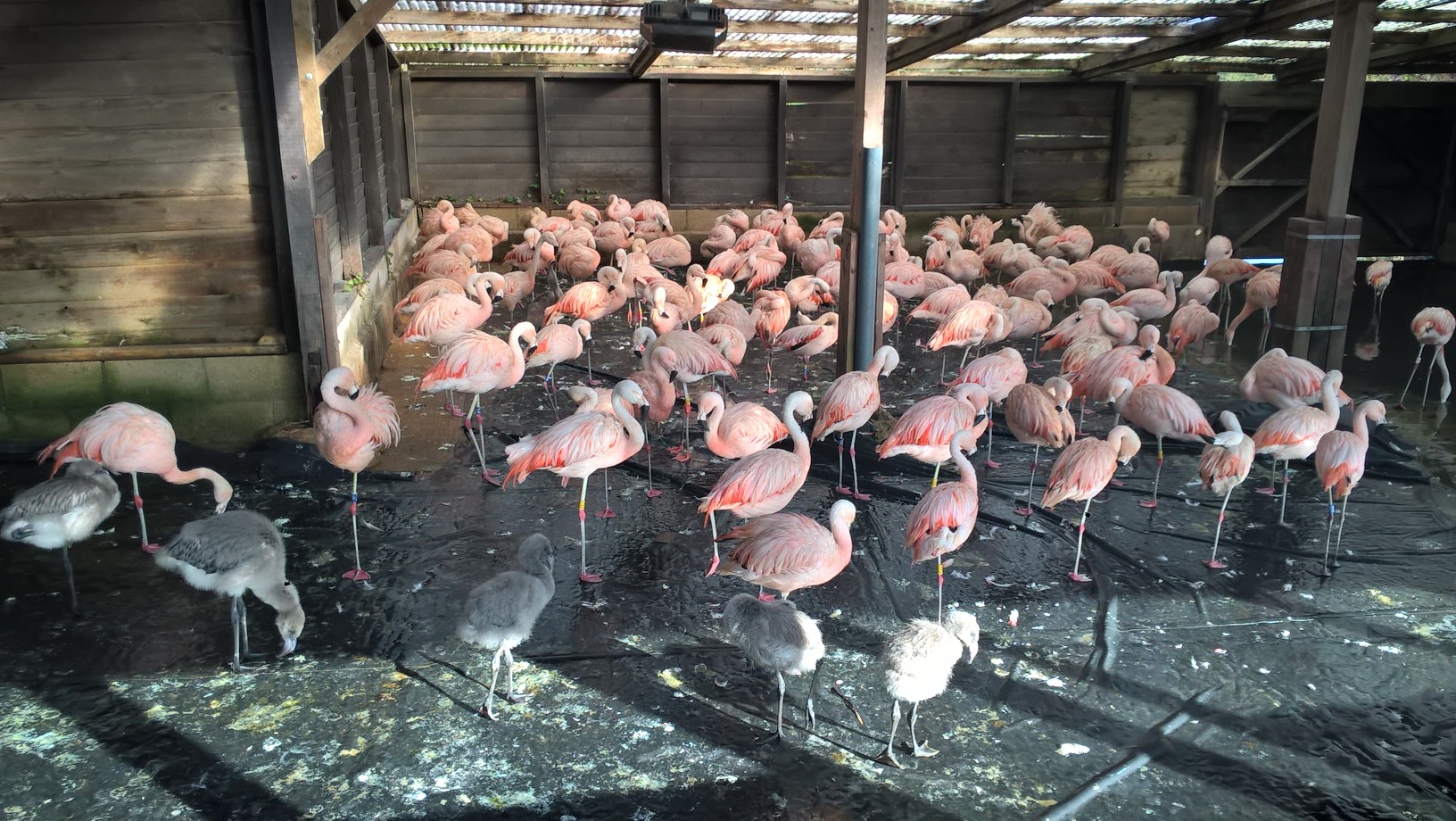 Snug and warm inside and getting through the worst of the moult. Chilean flamingos and chicks in their house at Slimbridge.
Snug and warm inside and getting through the worst of the moult. Chilean flamingos and chicks in their house at Slimbridge.
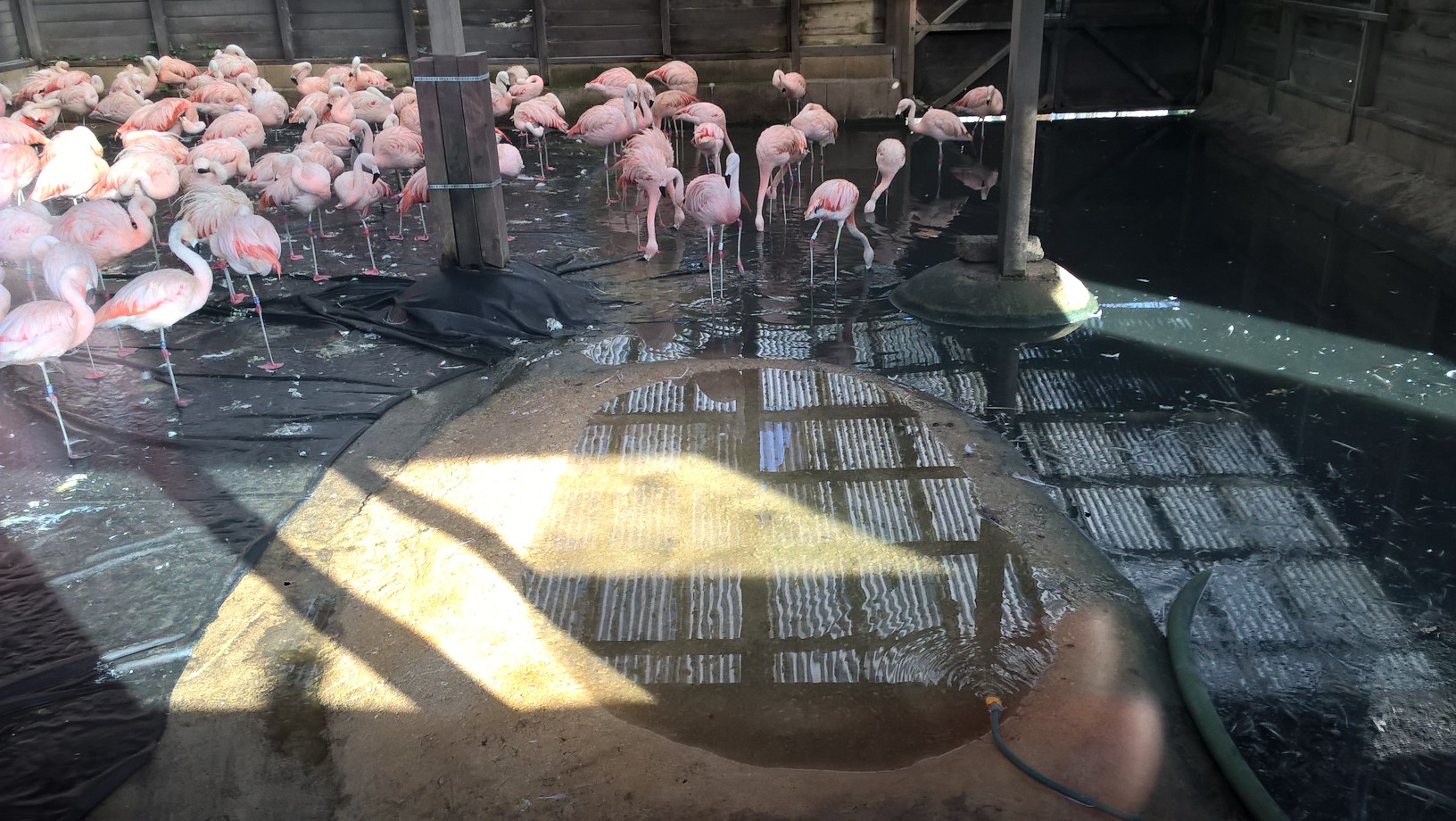 Giving the flamingos clean tap water encourages lots of bathing and preening. Moulting is a strenuous time for all birds, so a little bit of extra care really helps.
Giving the flamingos clean tap water encourages lots of bathing and preening. Moulting is a strenuous time for all birds, so a little bit of extra care really helps.
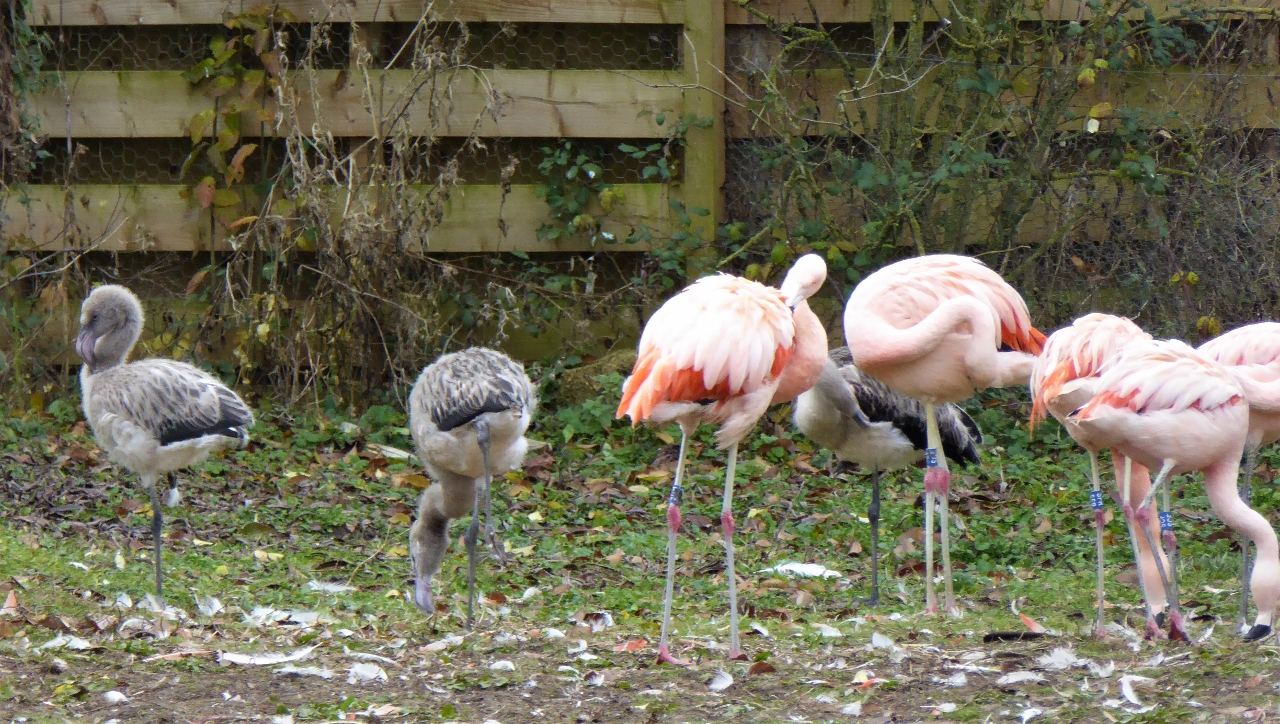 Now outside again. The adults have brand new plumage, the youngsters are exploring the South American Pen.
Now outside again. The adults have brand new plumage, the youngsters are exploring the South American Pen.
Whilst birds have been inside, the WWT Slimbridge aviculturists have taken the opportunity to re-sand the enclosures for each flock. I've talked about sand before in previous posts, but it's so important for healthy flamingo feet, clean chicks and quality nesting sites. The special estuary sand used looks quite bright at the moment (flamingo beach party anyone?) but will soon blend into the background. Not that the birds mind their colourful new flooring!
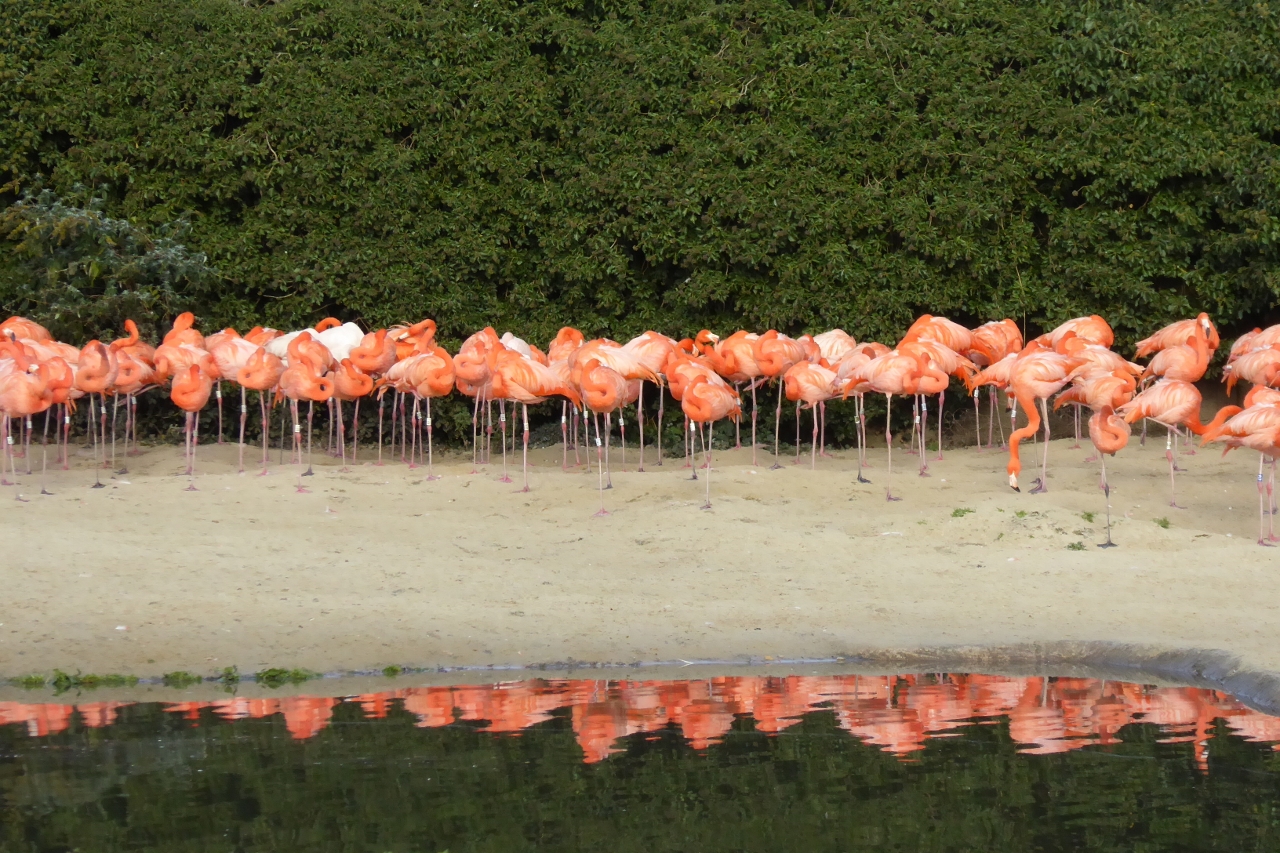 Life's a beach when you're a WWT flamingo...
Life's a beach when you're a WWT flamingo...
I’m not too sure what the birds would hope to find in their Christmas stockings if they hung them by their fireplaces (maybe unlimited shrimp and a bucket of algae?) but I’d like to think that their new sand, new flooring and extra creature comforts might have featured in flamingo letters to Father Christmas…
On behalf of all of the WWT pink birds and from me, have a very merry Christmas and a happy New Year.
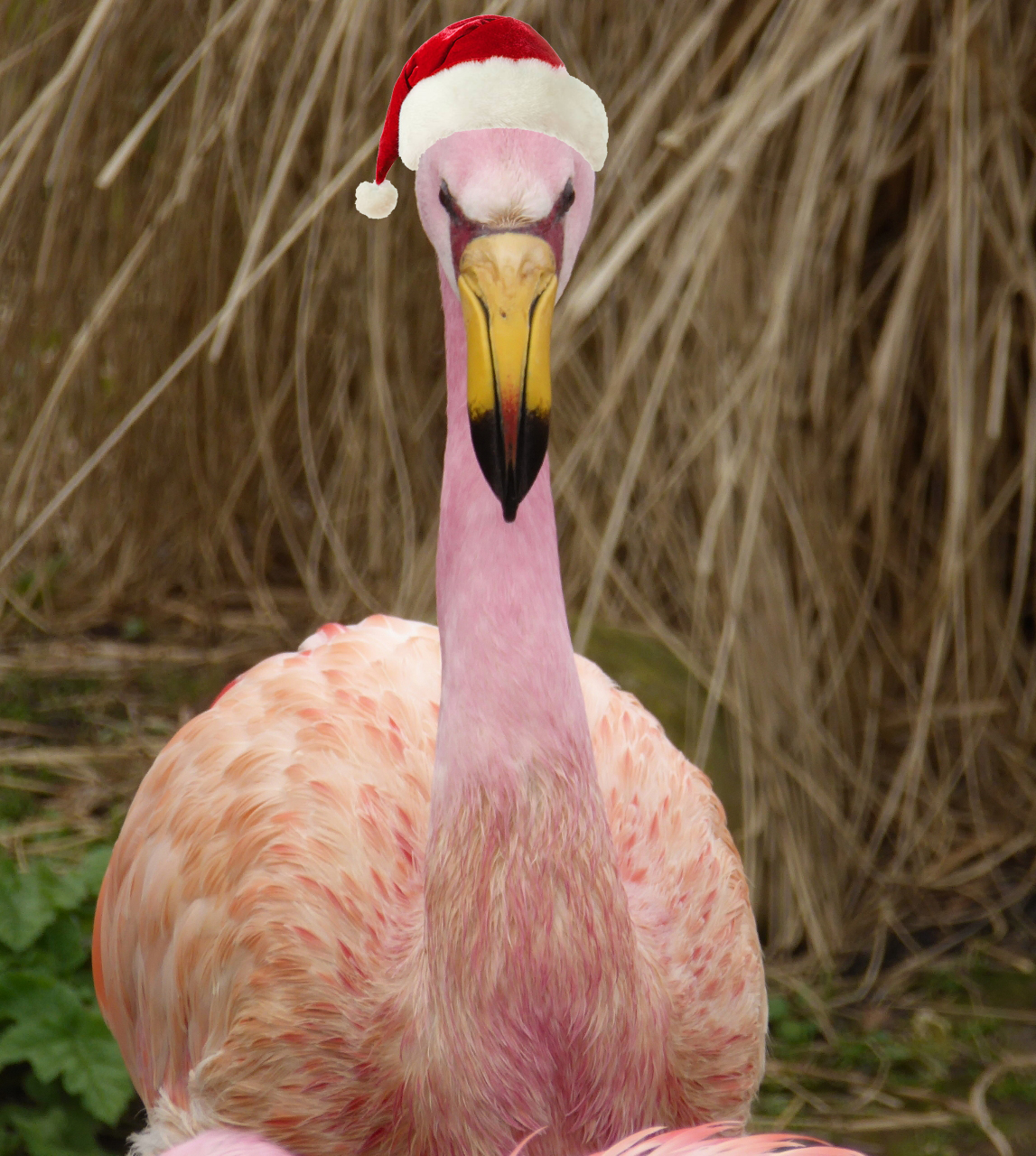 Mr James is the biggest flamingo fan of Christmas... It's takes AGES to train him to wear his Santa hat.
Mr James is the biggest flamingo fan of Christmas... It's takes AGES to train him to wear his Santa hat.
Some of this might not be completely true...
